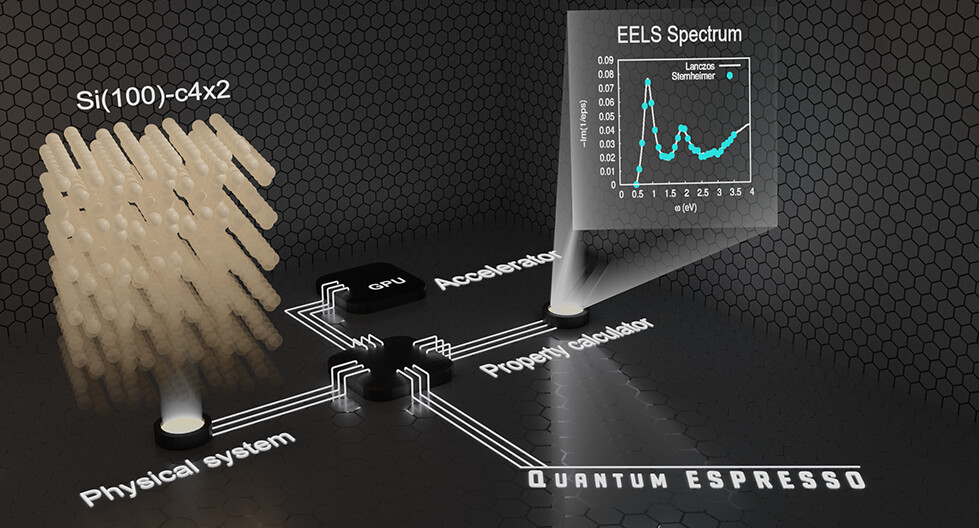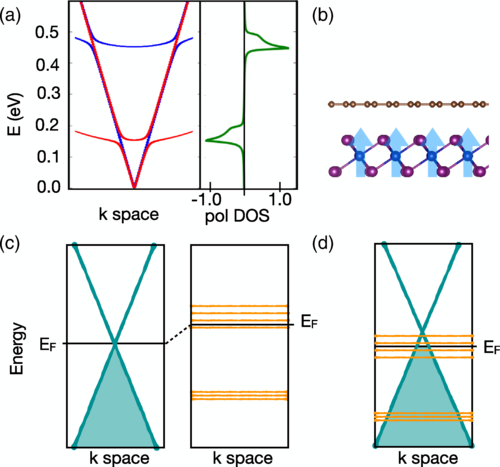Turning towards the exascale: porting and optimizing Quantum ESPRESSO for HPC supercomputers
The Quantum ESPRESSO suite has been optimized to fully exploit the newly available computational architectures, paving the route for further breakthroughs in molecular and material sciences.

source: https://doi.org/10.1021/acs.jctc.3c00249.
High-performance computing (HPC) is constantly achieving impressive advances, transforming the way we make science. By approaching the exascale (that is, 1018 floating-point operations per second), massive calculations can now be performed in a shorter amount of time, opening the door to further breakthroughs in molecular and material sciences.
Yet, a major task on the road towards exascale computing is making sure that the available algorithms and computational methods used for the simulations of molecules and materials effectively exploit the full potential of the supercomputers’ architectures.
In their latest work, Carnimeo and collaborators present a review of the status of the Quantum ESPRESSO suite, as well as the experience of porting and optimization of such software from existing computing systems to the most recent and powerful architectures available on EuroHPC computing systems.
Developed under MAX - Center of Excellence, Quantum ESPRESSO (QE) is an integrated suite of open-source computer codes for electronic-structure calculations and materials modeling at the nanoscale.
Based on density-functional theory, plane waves, and pseudopotentials, the QE suite is a software stack of conceptually distinct, though in practice partially overlapping, components. The cores of the QE suite are quantum engines whose main purpose is to perform Hamiltonian builds and to solve the relevant quantum-mechanical equations and their response to external perturbations (e.g., PWSCF, PHONON, turboEELS, turboLanczos, CP, and HP).
The objective of the study conducted by Carnimeo and collaborators was twofold:
-
➀ To outline the developments done in the GPU porting of Quantum ESPRESSO
-
➁ To highlight the performances of Quantum ESPRESSO on the current state-of-art HPC supercomputers
Several are the key results obtained by the team:
-
The GPU porting model has changed from a pure CUDA FORTRAN approach to a mixed interoperable OpenACC/CUDA FORTRAN scheme.
-
Without losing code readability and maintainability, Carnimeo et al. further developed the codes and achieved outstanding performance gains.
-
Thanks to the modularity of the codes, the porting task was split into many smaller sub-tasks, allowing many different executables to take advantage of a relatively limited number of ported modules and libraries.
-
Porting has been extended to the linear response codes of the QE suite, that are now fully operative on heterogeneous architectures.
-
By refactoring the code using the OpenACC/CUDA FORTRAN scheme, people who are not experienced with GPU coding can still contribute to the project without necessarily being skilled with the GPU programming languages.
Limitations:
-
In the present version of the QE codes, it is difficult to scale computations with no k-points, as R&G parallelism suffers from communication bottlenecks. In this respect, work is in progress to improve the current band parallelism and communication protocols in the libraries of the Quantum ESPRESSO suite.
A note about the architecture
-
Computations on Marconi100 using V100 GPU cards are about four to six times faster than CPU computations using the same number of nodes on the Galileo100 cluster. Tests done using A100 cards on the Selene cluster also suggest even better performance on architectures based on more modern GPU technologies.
To take full advantage of the latest HPC system capabilities and run software with the highest efficiency, codes for molecular and material modeling are undergoing elaborate developments to be adapted to accelerated architectures.
The work done by Carnimeo and collaborators is critical in this context as it leverages the newly available pre-exascale architecture to speed up calculations and foster scientific insight and solutions.
Reference article:
_____________________________________
MaX
Funded by the European Union’s Horizon 2020 research and innovation programme, MaX is a Centre of Excellence for HPC Applications. Its mission is to promote exascale and extreme performance computing capabilities and to scale up existing parallel codes towards exascale scaling performance.
As a coordinated effort of European leaders in the materials domain, prominent European HPC centres, technology partners, and training & communication experts, MAX proudly contributes to the long term EuroHPC strategy and community.
More details and a general overview of MaX can be found here.
Quantum ESPRESSO
More details about the code can be found at: https://www.quantum-espresso.org/.



